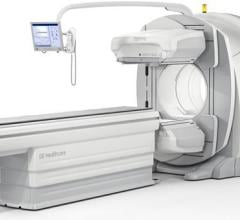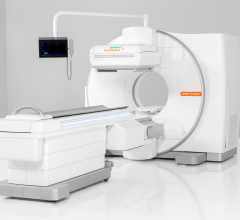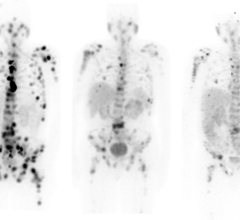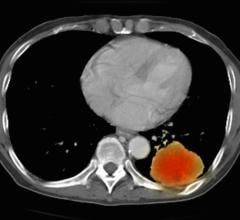May 7, 2008 - Using single-photon emission computed tomography (SPECT), researchers in The Netherlands were able to detect biochemical differences in the brains of individuals with generalized social anxiety disorder (also known as social phobia), providing evidence of a long-suspected biological cause for the dysfunction.
The study, which was reported in the May issue of the Journal of Nuclear Medicine, compared densities of elements of the serotonin and dopamine neurotransmitter systems in the brains of 12 people diagnosed with social anxiety disorder, but who had not taken medication to treat it, and a control group of 12 healthy people who were matched by sex and age.
Both groups were injected with a radioactive compound that binds with elements of the brain’s serotonin and dopamine systems. Once administered, the radiotracer revealed functional alterations in these systems by measuring the radioactive binding in the thalamus, midbrain and pons (known to be acted upon by serotonin) and in the striatum (known to be acted upon by dopamine). The altered uptake activity in these regions indicated a greater level of disordered function.
“Our study provides direct evidence for the involvement of the brain’s dopaminergic system in social anxiety disorder in patients who had no prior exposure to medication,” said Dr. van der Wee, M.D., Ph.D., at the department of psychiatry and the Leiden Institute for Brain and Cognition at the Leiden University Medical Center, Leiden (and previously at the Rudolf Magnus Institute of Neuroscience, University Medical Center in Utrecht, The Netherlands). “It demonstrates that social anxiety has a physical, brain dependent component.”
Serotonin and dopamine (neurotransmitters, or substances responsible for transferring signals from one neuron to another) act upon receptors in the brain. If the neurotransmitters are out of balance, messages cannot get through the brain properly. This can alter the way the brain reacts to normal social situations, leading to anxiety.
Other neuroimaging studies have shown abnormalities in glucose and oxygen consumption in the brain, according to van der Wee, who also points to causality as an additional issue. “Most of the people involved in these earlier studies were known to be already suffering from the disorder, so we do not know if the abnormalities were present before the onset of the disorder,” he said.
Based on earlier studies, some researchers have suggested that social anxiety disorder is a result of the interplay between a genetic or acquired biological vulnerability and environment. More recent research has indicated that social anxiety disorder might be related to an imbalance of the neurotransmitter serotonin. This is the first time the brain’s dopaminergic system was examined directly.
“Although there are no direct implications for treatment as a result of this study yet, it is another piece of evidence showing biological abnormalities, which may lead to new therapeutic approaches and insight into the origins of the disorder,” said Dr. van der Wee.
According to the National Institute of Mental Health, social anxiety disorder affects approximately 15 million American adults and is the third most common mental disorder in the United States, after depression and alcohol dependence. The essential feature of the disorder is the fear of being evaluated by others, with the expectation that such an assessment will be negative and embarrassing. It tends to run a chronic and unremitting course and often leads to the development of alcoholism and depression. The disorder most often surfaces in adolescence or early adulthood, but it can occur at any time, including childhood.
Co-authors of “Increased Serotonin and Dopamine Transporter Binding in Psychotropic Medication-Naïve Patients With Generalized Social Anxiety Disorder Shown by 123-I-_-(4-Iodophenyl)-Tropane SPECT” include J. Frederieke van Veen, Irene M. van Vliet, Herman G. Westenberg, Department of Psychiatry; and Henk Stevens, Peter P. van Rijk, Department of Nuclear Medicine, all from the Rudolf Magnus Institute of Neuroscience, University Medical Center Utrecht, Utrecht, The Netherlands.
For more information: www.snm.org


 February 15, 2024
February 15, 2024 









